Are you ready to convert your e-commerce traffic into customers? Oh, so get ready. We’re going to explore 20+ effective techniques to greatly increase your e-commerce conversion rates. Whether you manage a large online electronics store or sell handcrafted jewelry, these techniques have universal relevance.
Think of this as your success playbook, stressing:
- Product descriptions with on-point relevance
- Ideal site navigation
- Perfect customer service
- Cross-selling and strategic upsell
And that’s only a taste of what is next. One very important topic we will explore is utilizing Plerdy UX & CRO analysis. This strong instrument provides thorough understanding of user behavior and points up areas for improvement.
Stay tuned to untangle this wealth of knowledge, polished to conversion your e-commerce business into a convert-powerhouse. Every tactic is painstakingly created to differentiate you in the very competitive e-commerce scene. Prepare therefore to see your conversion rates skyrocket.
Remember, it’s about motivating them to click “buy,” not only about attracting them!
What is Conversion Rate?
In the busy world of e-commerce, good control of conversion rate is a great driver of success. This statistic helps you to turn possible customer contacts into real sales, so influencing your e-commerce performance in direction of increase.
Said another way, a conversion rate is the percentage of visitors to your website who perform the intended activity. Therefore, every action you do in line with your company goals counts toward your conversion rate whether you are buying, registering for a newsletter, or starting a download:
Visualise this: Online gourmet coffee shop is yours. It brings 4,000 visitors in a week, of which 200 choose to purchase your specialty beans. Your conversion rate is then five percent.
The equation is essentially this:
- Total conversions (purchases, in this case) = 200
- Total visitors = 4,000
- Conversion Rate = (200/4,000) * 100% = 5%
The foundation of a successful e-commerce business is knowledge of and effort toward raising your conversion rate. By tending to this statistic, you create the foundation for increasing client involvement and, thus, your general sales. Your e-commerce company can explode to success with a better conversion rate, therefore increasing its customer base and profits multiplication. Thus, keep your eye on the ball; this indicator will help your company to grow!
Importance of Conversion Rate in E-commerce
![]()
Within the dynamic realm of e-commerce, the conversion rate becomes a lighthouse pointing companies toward success. It’s not only a figure; it’s the lifeblood of your company, linking customer visits to transactions and proving the success of your web approach.
In e-commerce, your ROI is better the higher your conversion rate. Imagine, for instance, a digital fashion boutique with a 10% conversion rate—100 of every 1000 guests are making purchases. On the other hand, a competitor boutique with the same volume but a 5% conversion rate just gets 50 sales. Enjoying a higher ROI and more profitability, the former performs better.
In e-commerce, main advantages of a high conversion rate include in:
- Greater client base: More conversions translate into more clients.
- More conversions translate into more revenues, so improving profitability.
- More conversions make marketing spending more efficient, therefore enhancing ROI.
Thus, a higher conversion rate drives the expansion engine of your online retailer. It creates a vibrant market, hence increasing customer involvement and sales power. Improving your conversion rate will help your e-commerce company enter a new sphere of success whether you run a small online bookshop or a busy digital supermarket. Furthermore, knowing your conversion rate is not a choice as the competitiveness in the digital market gets more intense; survival and expansion depend on it.
1. Optimize Your Site’s Load Time
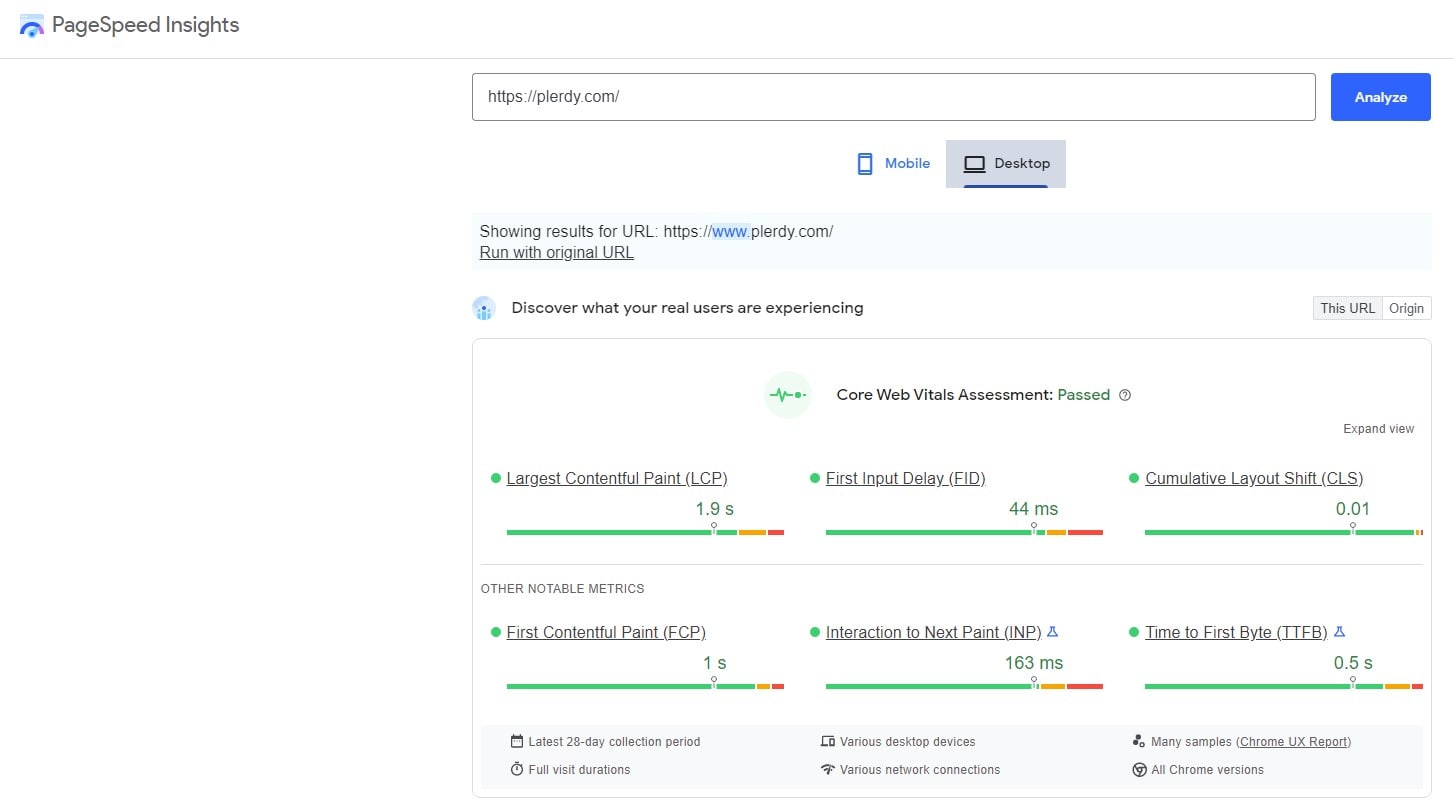
In the hectic field of e-commerce, speed is the rule. Reducing the load time of your website can be the impetus for your conversion rate to soar, therefore improving customer experience and sales.
Imagine this: a visitor arrives on your online craft store, but the homepage loads an eternity. They probably will lose tolerance and head elsewhere. Your conversion rate will suffer if your site loads like a tortoise ascending a hill.
Imagine another scenario, by contrast. Customers may swiftly and simply browse, choose, and check out your online furniture showroom—which promises a load time as fast as a cheetah. The seamless customer journey follows from which a high purchase probability results.
Easy approaches to maximize the load time of your site consist in:
- Reducing HTML, JavaScript, and CSS will help to eliminate extraneous characters that might cause your site to lag.
- Since their browser can load your site’s “remembered” files, enabling browser caching lets return visitors load your site faster.
- Make sure your photographs are in the correct file format and no bigger than they should be.
Your e-commerce company stands to gain greatly when you make your website speed perfect. A fast-loading site guarantees customer satisfaction, promotes interaction, and drives your conversion rate’s increase. You will thus see an increase in profitability as well as in your e-commerce performance.
2. Use High-Quality Product Images
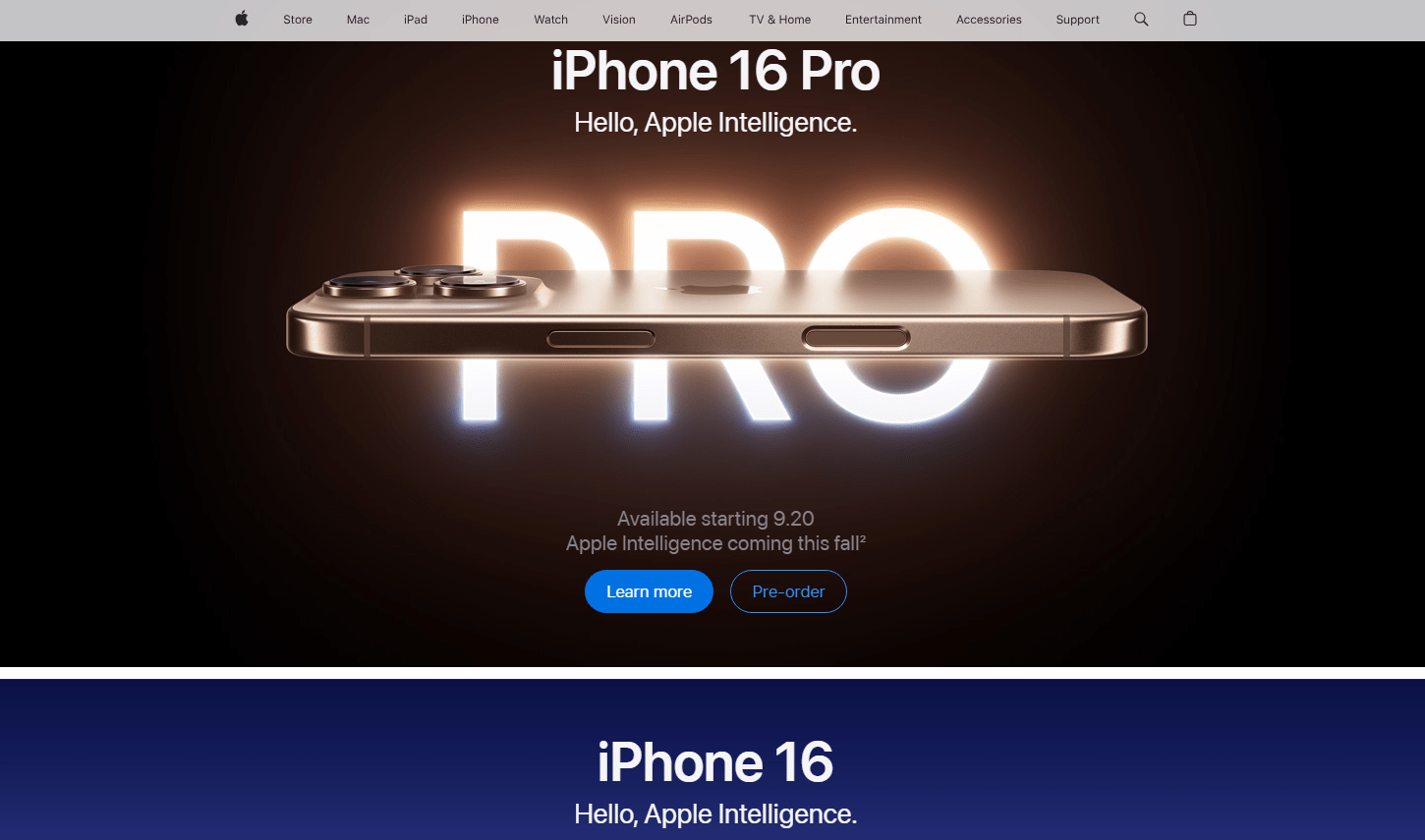
Using premium product photos is not only advice but also a must-do in the competitive e-commerce scene. Online customers depend on visuals to make purchase decisions, same as customers in traditional locations examine items up close. Your silent salesperson will be clear, high-resolution photographs that draw clients and increase your conversion rate.
Let us explore an example: a handcrafted jewelry internet business. From the shine of the diamonds to the superb workmanship of the metalwork, the clear photographs highlight each item’s minute features. Customers may be inspired to click the “buy now” button by this clarity and detail, therefore fostering trust and desire.
Review the following to maximize product images:
- Show high-resolution pictures: Customer experience is better the more sharp an image is.
- Give several points of view: Show customers a complete picture by including several viewpoints and close-ups.
- Use a fresh backdrop: A basic, ideally white background guarantees your goods will be the main attraction of the display.
Presenting your products in their finest light tells a compelling visual narrative that builds customer confidence and encourages purchase. High-quality photographs, however, are about more than just looks; they’re about increasing customer involvement, raising conversion rates, and, eventually, boosting your e-commerce income. Every picture presents an opportunity to sell; don’t let it go to waste!
3. Provide Detailed Product Descriptions
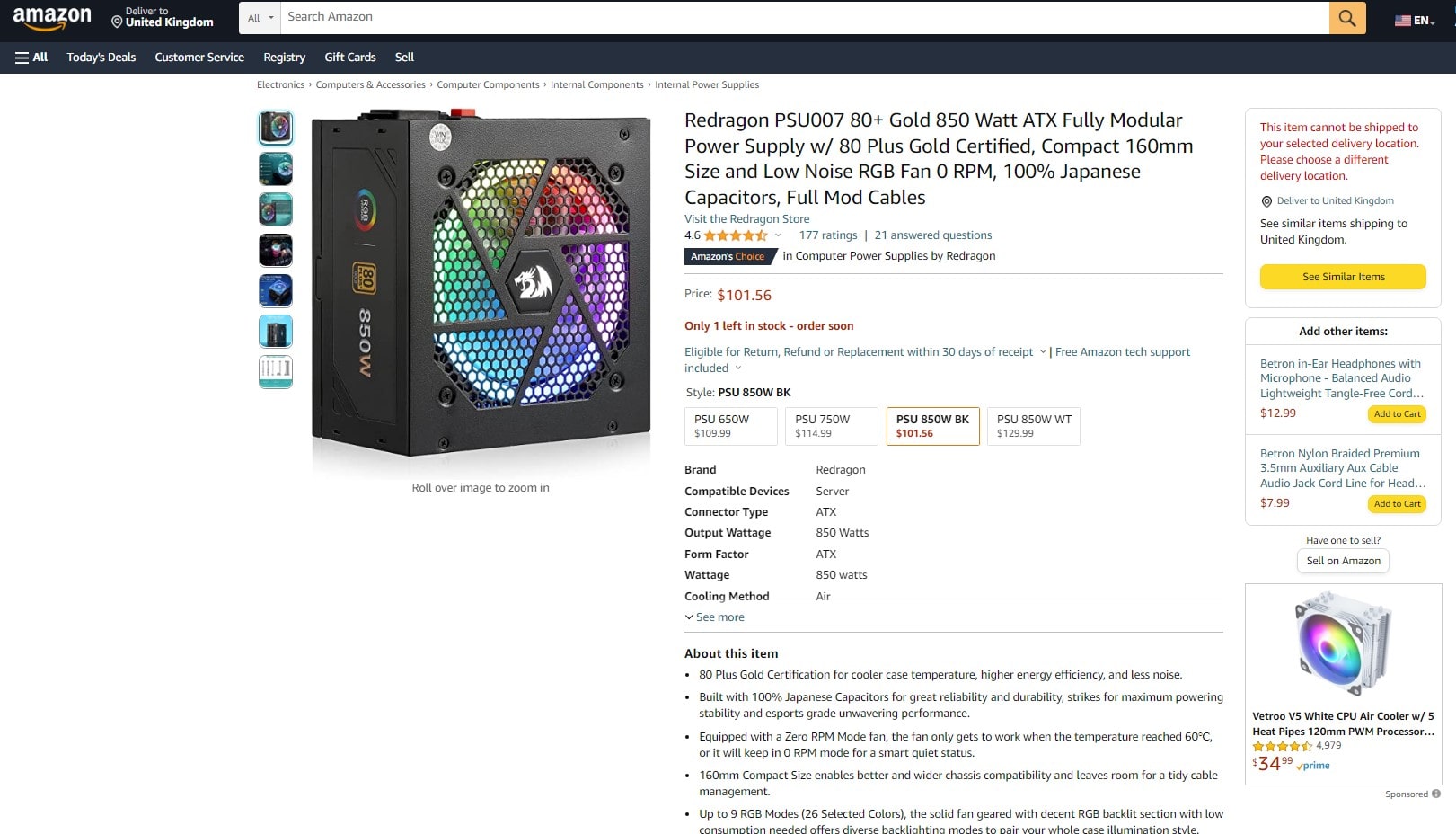
In e-commerce, a product is only as good as its description. This idea especially applies to try to raise conversion rates. For customers poised on the brink of a purchase, thorough, convincing product descriptions can be the determining element.
Allow us to examine a real-world case. Suppose you run a web store offering handmade chocolates. Every product description tells a story about the cocoa bean source, the special taste mix, and the exquisite chocolate-making technique. Before making an order, this degree of information stimulates taste receptors.
These salient features should help you create product descriptions:
- Highlight benefits, not just features: Describe how your product will improve the customer’s life rather than enumerating ingredients or measurements.
- Apply sensory language: To paint a vivid mental picture, call on taste, touch, sight, smell, and sound.
- Keep it understated: While specifics are crucial, leave customers with the knowledge they need.
Spending time and effort to create thorough product descriptions pays off in many respects. It lets you raise conversion rates, create trust, and change customer view. Moreover, changing your product descriptions into compelling stories will conversion your e-commerce site from another online retailer into a distinctive and interesting buying experience. Regarding interesting e-commerce content, the pen is indeed more powerful than the sword.
4. Simplify Your Checkout Process
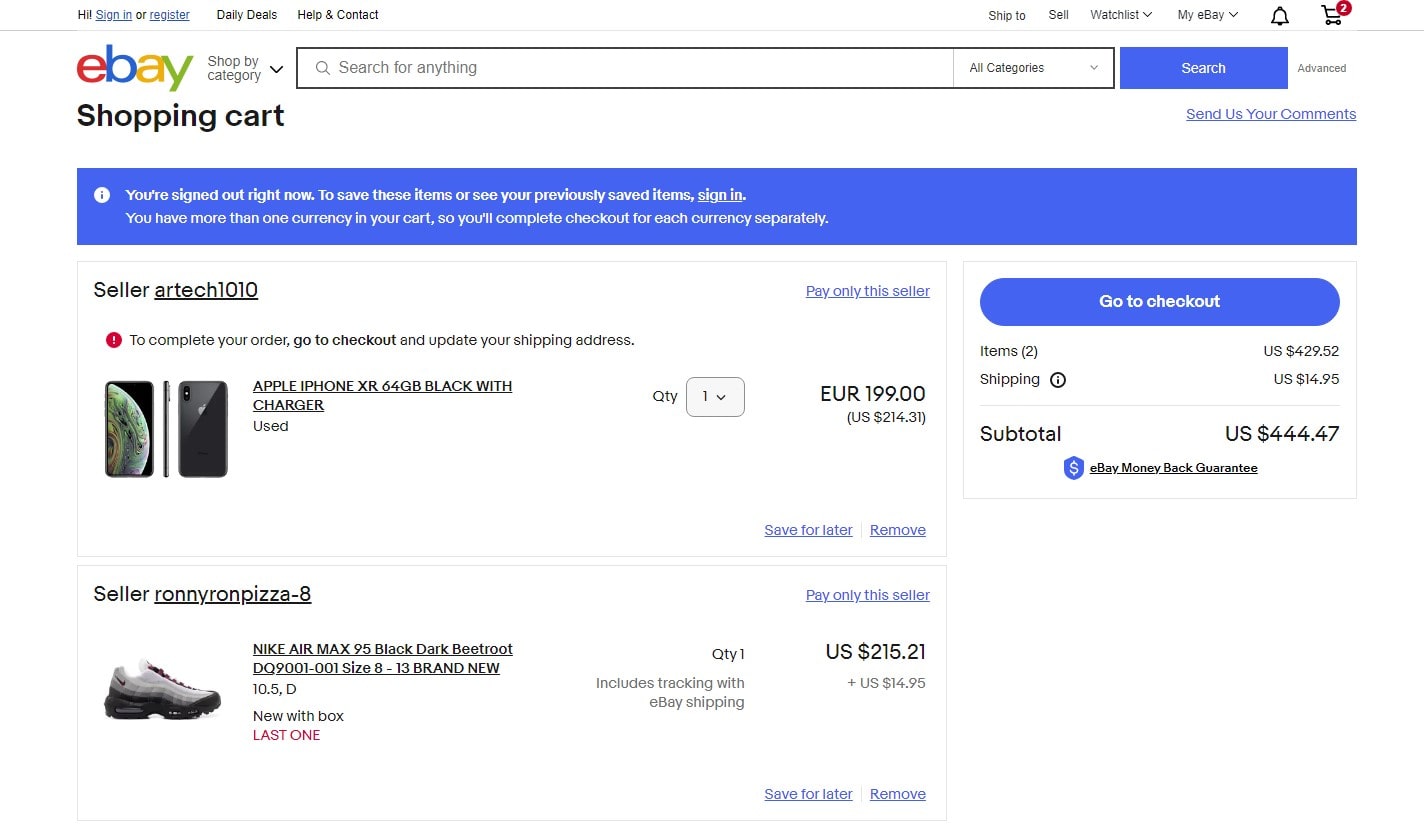
In the busy field of e-commerce, a simplified checkout system can be a main factor raising your conversion rate. Every extra step or complication at checkout, though, might perhaps push customers away—a fate we all try to avoid.
Imagine this: you manage an internet store with an eye toward vintage clothing. You decide one day to completely change your checkout system. You choose to offer several payment choices and reduce data entering needs. Conversion rates clearly show a notable increase following installation. Customers today move through the checkout with less effort, which results in more finished purchases.
Use these rules for streamlining your checkout system:
- Limit expected fields: To expedite the checkout, just request basic information.
- Present several payment choices: Incorporate credit cards, debit cards, PayPal, and other often used payment options to meet customer preferences.
- Use indications of progress: Show customers where they stand to remain informed and involved.
Your clients will remain in the driver’s seat— just where they need to be for your e-commerce company to grow—by removing obstacles and streamlining checkout. Emphasizing a flawless checkout experience will raise conversion rates and a devoted customer base.
5. Make Your Website Mobile-Friendly
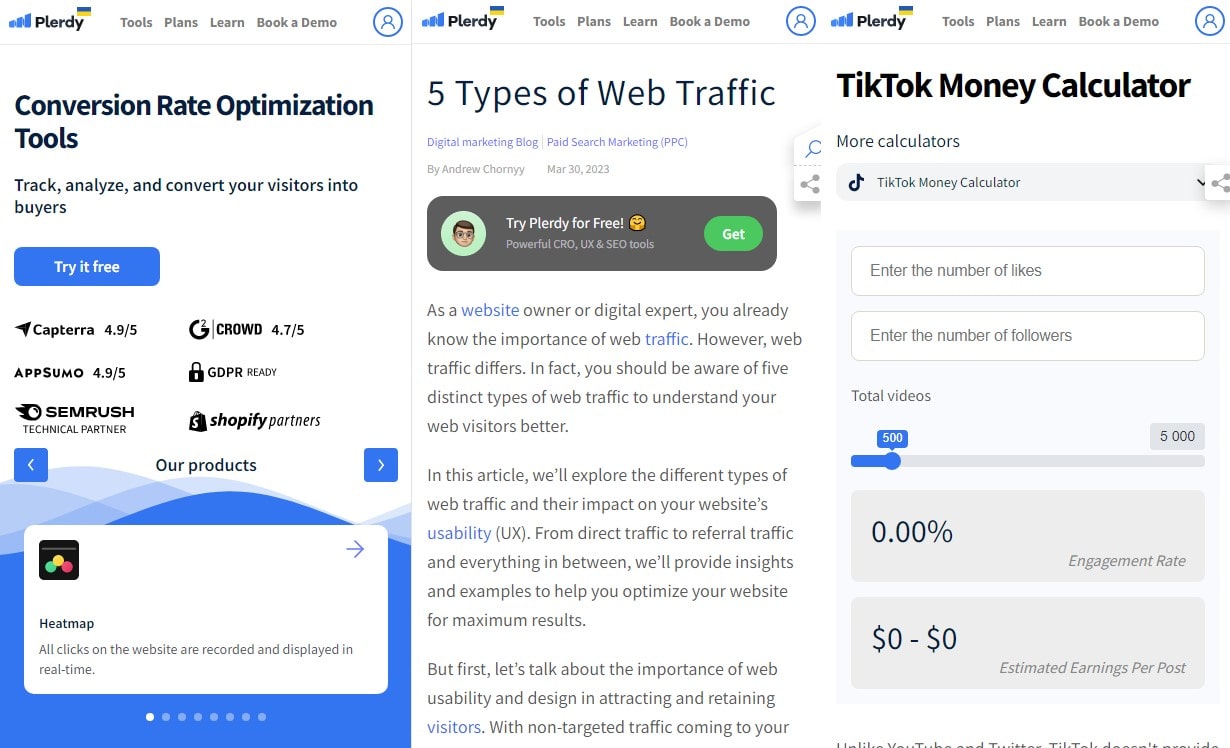
A mobile-friendly website is no more a nice-to-have in the digital environment of today; it is a need. The rise in smartphone use has created a new trend whereby customers routinely utilize their mobile devices for internet browsing and purchase of goods. Thus, raising your conversion rate depends on maximizing your e-commerce site for mobile devices.
You market homemade candles. From the comfort of their cellphones, your clients may check product specifications, read reviews, and make purchases. Your conversion rate climbs as a result.
Think on these key components while modifying your website for mobile visitors:
- Responsive design: Make sure your site adapts correctly on many screen sizes—from tablets to cellphones.
- Speed: Minize the load time of your website on mobile devices. Customers won’t tolerate slow-loading pages.
- Easy navigation: Keep menus simple and brief; make sure buttons are big enough for mobile use.
Adopting a mobile-friendly strategy drives your online store into the fast-paced, on-demand life of your customers. Meeting customers where they are—on their mobile devices—you are setting your company to grab more sales, increase your conversion rate, and survive in the cutthroat e-commerce scene.
6. Use Social Proof and Reviews
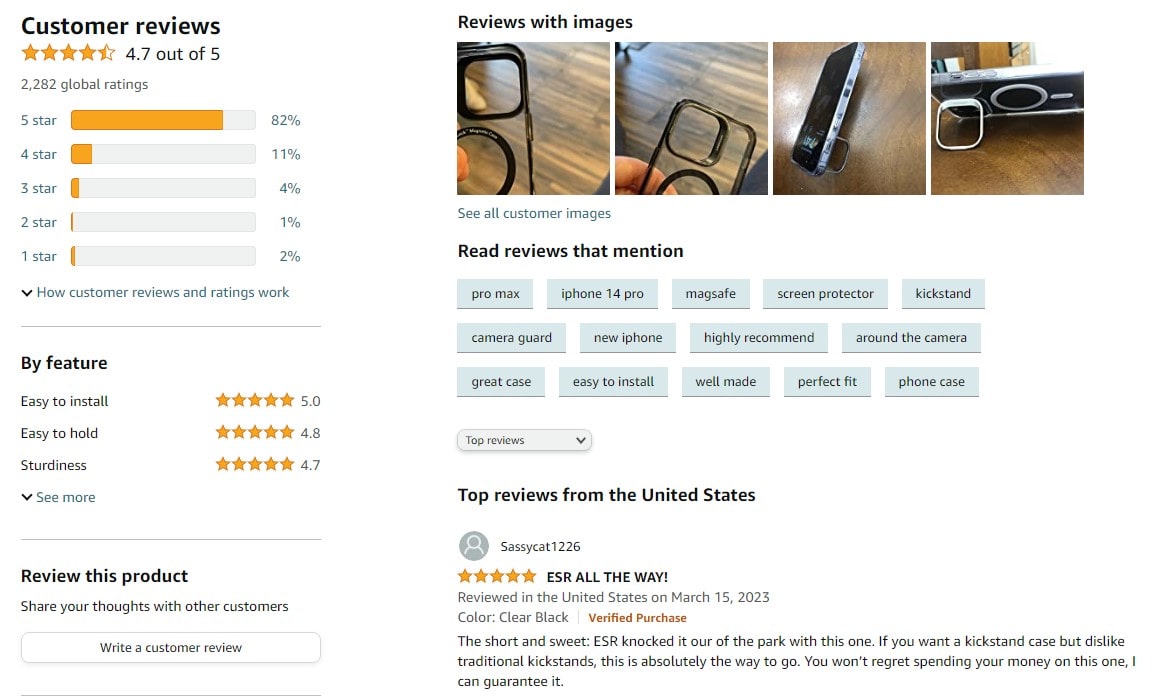
Using social proof and reviews will help your e-commerce store convert far more. Imagine an online clothes store; prospective clients decide to purchase one right away after reading the excellent evaluations about your elegant garments. Social proof is the magic; it will enable you to boost sales with authenticity.
Customers typically trust other customers. Thus, you are establishing trust and offering insightful analysis of your items by highlighting ratings and reviews of them. Strong instances of social proof are testimonials from happy customers, influencer endorsements, or elements in reputable media sources.
To make best use of social proof and reviews, think through:
- Showing ratings and reviews conspicuously on product pages.
- Post customer quotes on your website and on social media.
- Emphasizing media references, if any.
In the e-commerce space, developing confidence with your customers is absolutely critical. By increasing your conversion rate with reviews and social proof, you can build that trust. Real, relevant experiences are what customers yearn for, and the best way to give it is via the honest voices of other customers. Use their experiences, tell success stories, and see how your conversion rate increases. Prepare then to use social proof’s power and open the path for your e-commerce success.
7. Improve Your Site’s Navigation
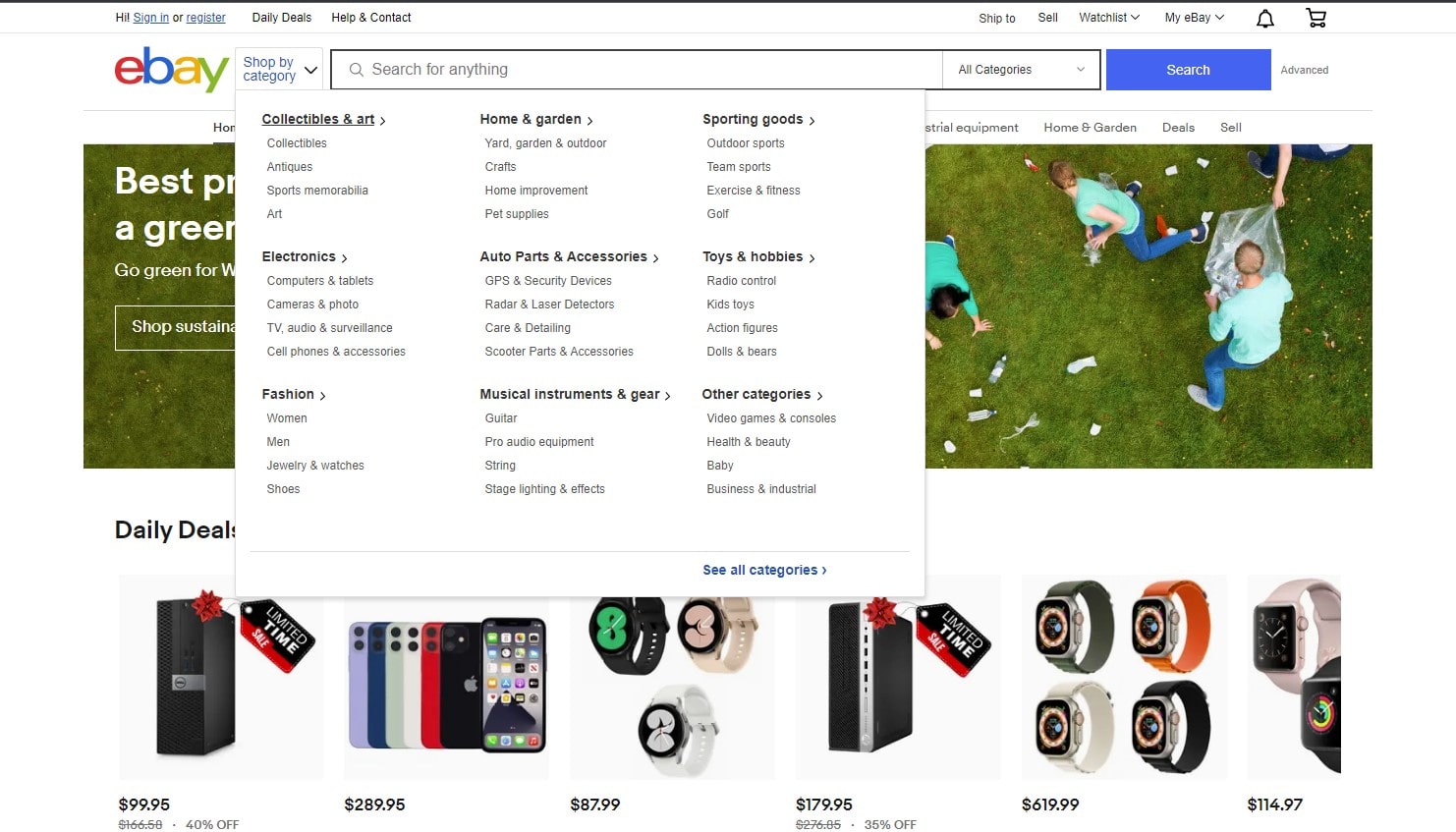
Improving the navigation of your e-commerce website is not only a little change but also a big turn towards increasing conversion rate and client experience. Your site should take users straight to checkout, much as a well-designed mall would allow them to move easily over its pages. Customer satisfaction and conversion rate can especially be raised by a flawless and pleasurable navigation experience.
Think of a virtual bookshop. Customers should quickly search the digital shelves for their preferred genre, author, or title without difficulty. Repeat purchases resulting from this flawless experience can produce devoted customers.
Emphasize the following to improve the navigation on your site:
- Sort items logically first, grouping them by type, use, or audience.
- Offering a thorough search capability helps customers value being able to quickly identify items.
- Emphasizing your most often used products can help your clients find what’s trendy and profitable right now.
Expertly guiding customers via your e-commerce website is a skill that, when done right, increases conversion rate. Creating a road for them will help them to enjoy shopping and open the path for them to be returning customers. You are enhancing the user experience and clearing the path to e-commerce success as you maximize the navigation of your website. So get ready to grab the driver’s seat and guide your online retailer toward better conversion rates.
8. Personalize User Experience
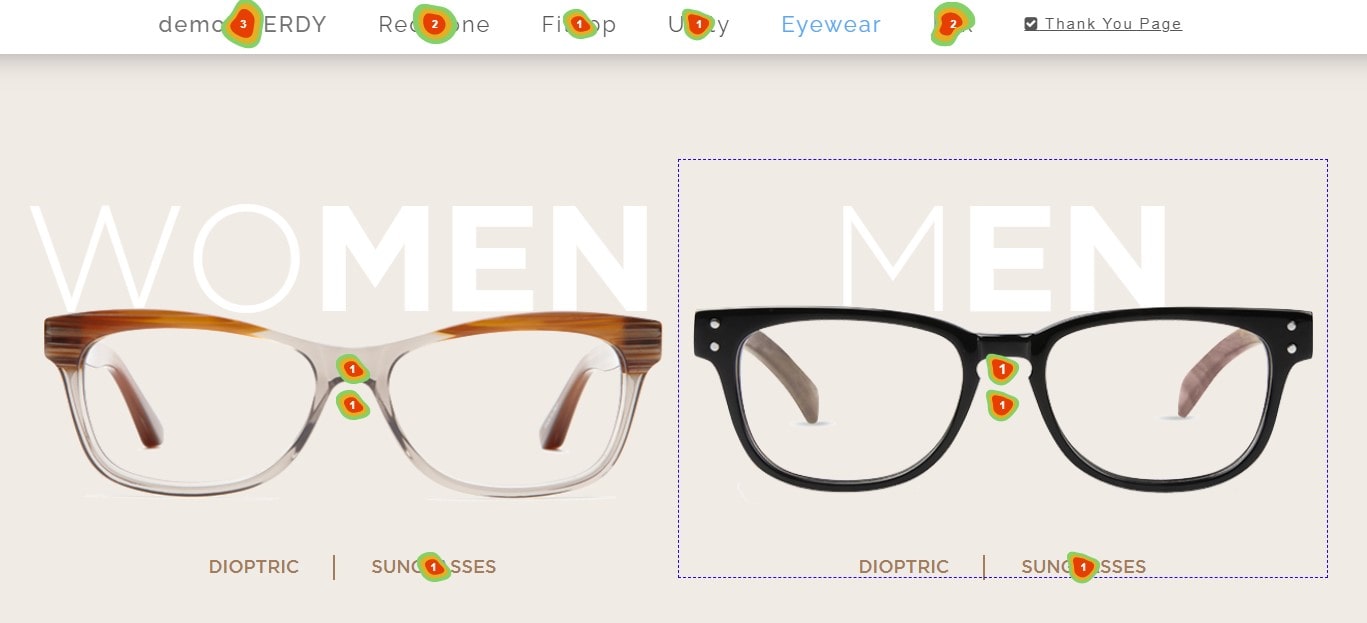
Increasing your e-commerce conversion rate calls for more than simply a ready-made inventory. It means customizing an experience for every client so they will feel unique. Imagine a boutique where the employees know your name and preferences; you would want to visit back? Apply that idea to your online store to find your conversion rate rising.
Consider an online clothes retailer that shows a customized homepage using customer information. Returning clients essentially find their preferred brands, recommended sizes, and styles as well as their own personal shopping assistant.
Here’s how you present this custom-made experience:
- Show customers what they enjoy using cookies to remember their browsing past.
- Based on past purchases, suggest items; they might need that matching tie.
- Everyone appreciates a good deal; send customized emails including special offers.
Customized experiences help customers feel appreciated and understood, which motivates them to stay around and buy more. Understanding and accommodating your customer’s particular tastes can help you to improve their purchasing experience and guide your e-commerce site toward higher conversion rates and more success.
9. Use Retargeting Techniques
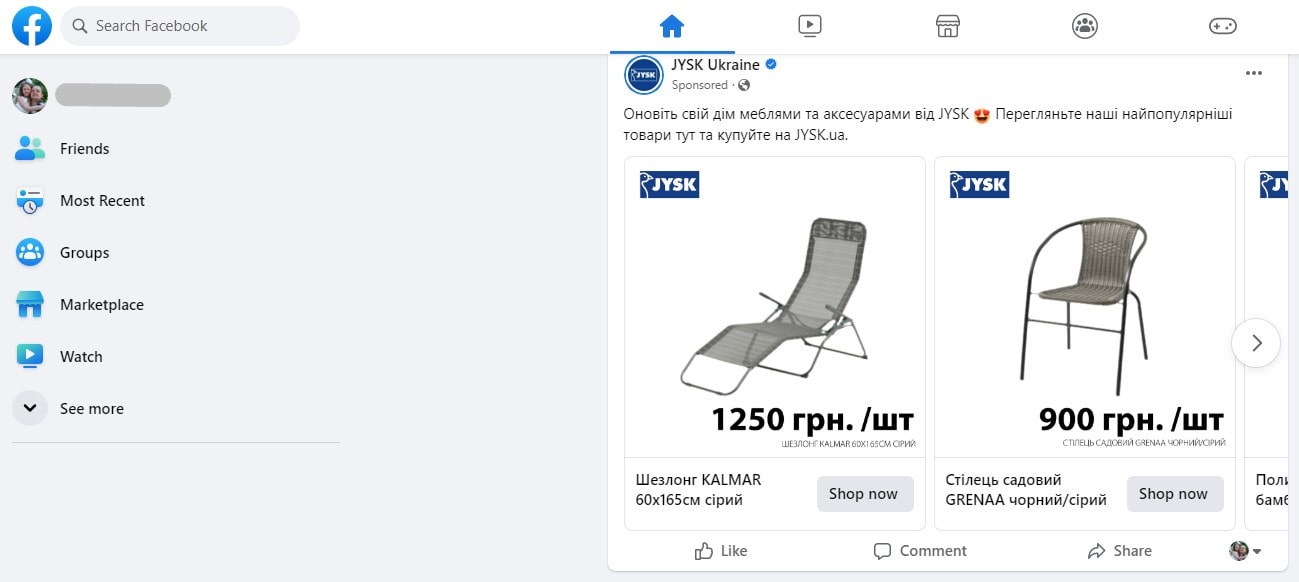
One quite successful approach for raising e-commerce conversion rates is using remarketing tactics’ power. It’s about piqueing the curiosity of clients who have previously visited your website therefore demonstrating a glimmer of interest in your offerings.
Imagine if you will an online bookshop applying retargeting. A client looks around and says, “science fiction books but leaves without buying.” Retargeting allows the bookshop to send a customized ad or email highlighting the newest science fiction releases. It reminds customers of their interests and motivates them back to buy, much as a light prod.
Think about the following to effectively implement retargeting methods in your e-commerce plan:
- Use website cookies to monitor user behavior.
- Display tailored advertising on different platforms depending on surfing behavior of users.
- At last, send tailored emails with seen goods and associated recommendations.
In a market overrun with e-commerce sites, standing out to your customer is critical. Retargeting methods help you to keep on top of your customer’s mind, thereby raising the conversion possibility. It guarantees that your customers return for more, so supporting the growth of your e-commerce. Customers who experience remembered value do, after all, return and convert.
10. Offer Live Chat Support
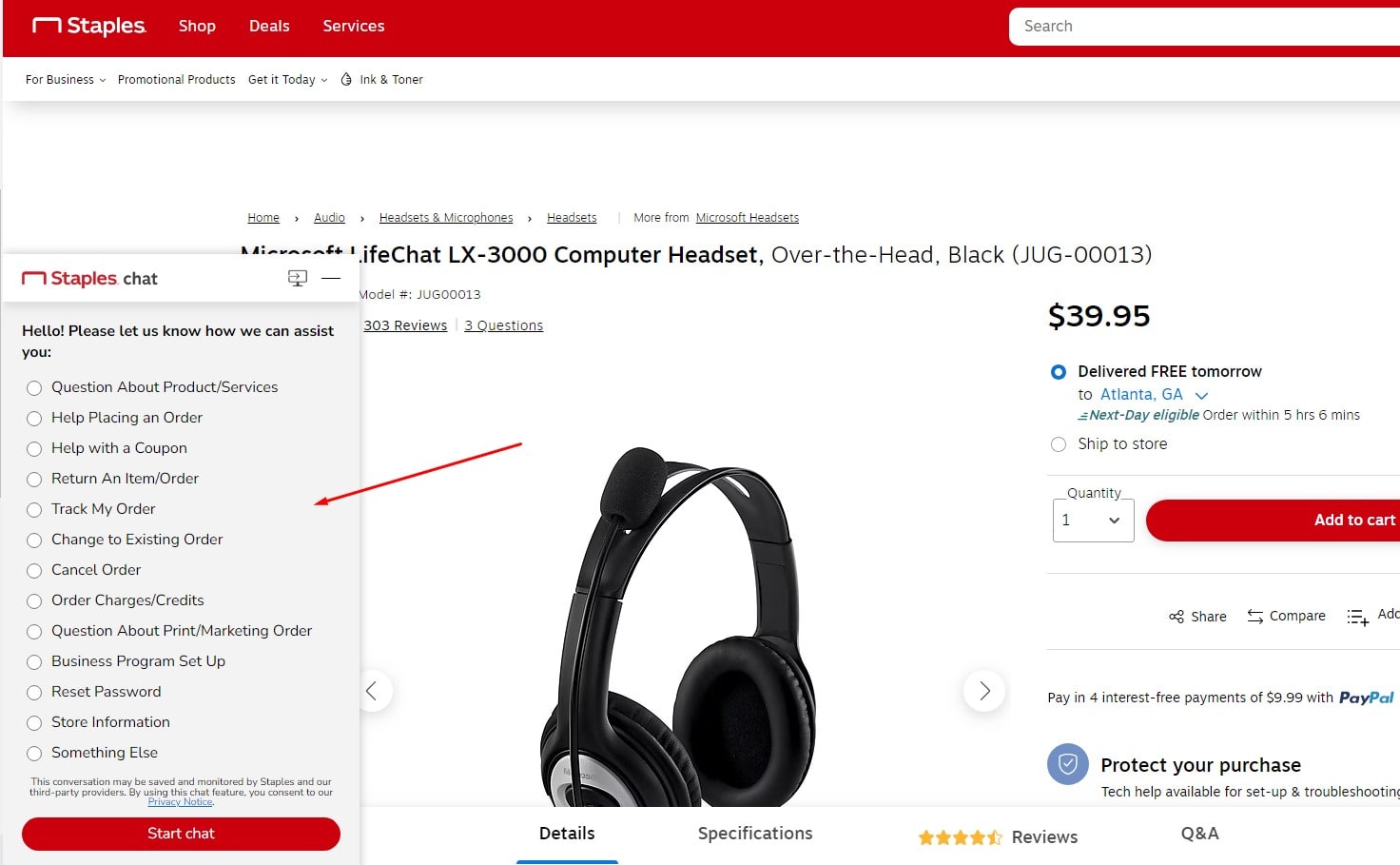
Including live chat help into your online store will significantly raise conversion rates. For customers just about to make a purchase, the appeal of quick, tailored customer service is a strong inducement.
One online clothes retailer uses live chat. If a customer need sizing explanation, seek assistance instead of leaving the cart. The customer is guided to the proper size by the support team’s response. This fix brings things back into line and results in a good purchase.
Good live chat integration into your website calls for a three-pronged approach:
- Make it evident: Make sure the conversation symbol is striking without being invasive.
- Be reactive: Try to answer customer questions as fast or real-time as you can.
- Prepare your staff: Give them the tools they need to properly resolve customer issues and respond to product questions.
Offering live chat assistance will help your company stand out in the ever changing e-commerce scene. It greatly improves client buying experience by letting you quickly address issues. A content customer is more likely to convert, therefore boosting your revenue and encouraging long-term loyalty. Not only a tool for assistance, live chat is a potent tool for increasing e-commerce conversions by combining customer service with the flawless, quick buying experience current customers yearn for.
11. Display Security Seals
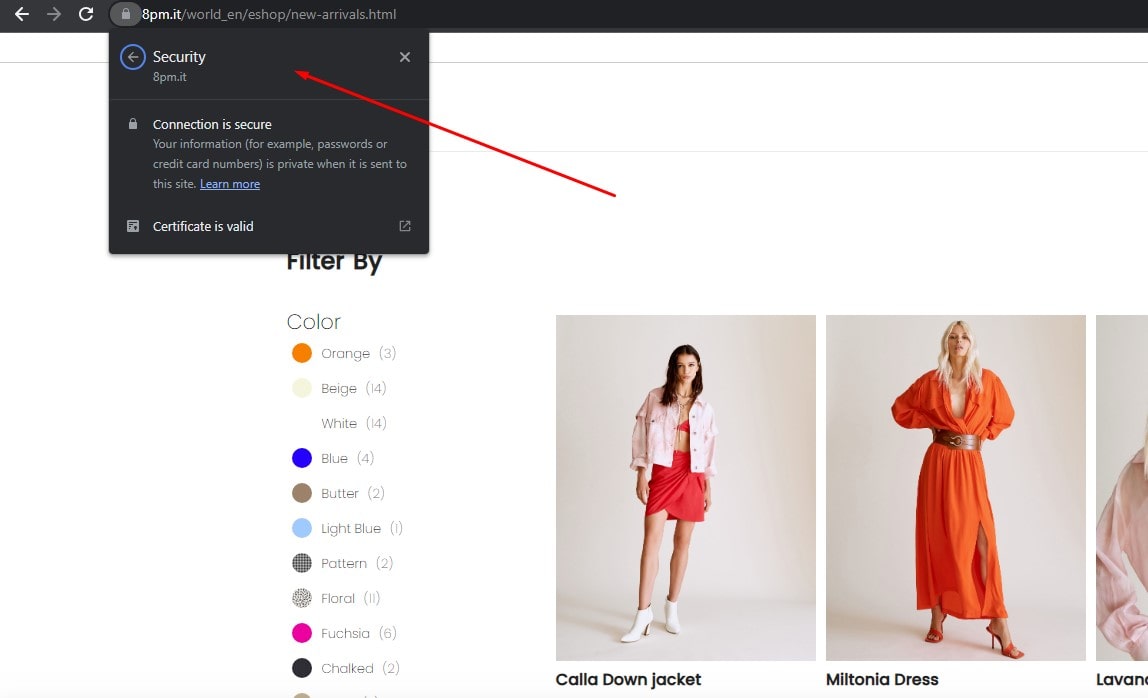
Showing security seals is a great way in e-commerce to build customer confidence and raise conversion rate. Online safety counts, hence demonstrating your clients you give top priority can help.
For instance, two practically identical online retailers fight for clients. One boldly shows trustworthy security seals; the other does not. Data protection-conscious customers typically opt toward the first store. The very presence of the security seals gently alters customer preferences, therefore promoting conversions and higher sales.
Consider these fundamental actions to properly apply security seals:
- First, select reputable vendors: Choose reputable security firms with a name-brand.
- Put them deliberately where they belong: Show seal near your website footer or sensitive form field.
- Correct them often: Maintaining credibility requires current certificates.
Showcasing security seals helps to build dependability and confidence, hence enabling your clients to be more at ease during their buying trip. Furthermore, this small deed might inspire confidence in your website, therefore increasing conversions and creating a devoted clientele. Transparency and trust define the path to a higher conversion rate; one approach to loudly and clearly communicate these principles to your clients is by showing security seals.
12. Implement a Strong Call-to-Action
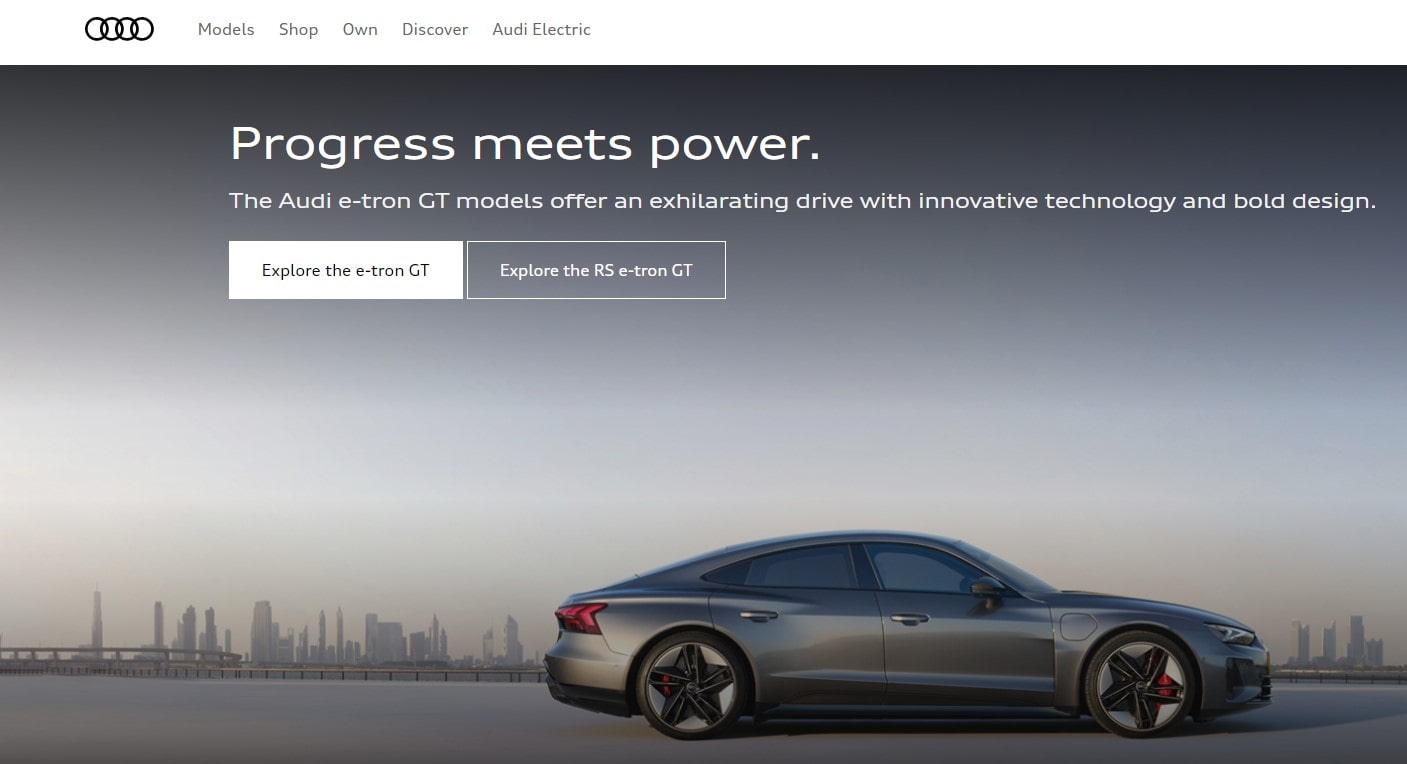
Using a strong call-to- action (CTA), boost your e-commerce company. Conversion rates are driven by this, which also guides the customer path and generates instantaneous reactions. It’s a vital gear in your e-commerce system.
Make sure your CTA is unambiguous and really clear. It must to yell for quick response and leave no place for customer uncertainty. Clearly visible and appealing, place the CTA front and center on your page. Common and effective are a “buy now,” “add to cart,” or “subscription” button.
Use strong language to raise user involvement. A basic “Subscribe,” for instance, can be boring, but “Join the Community of Happy Customers” appeals emotionally. Customized CTAs meet the expectations of your audience and, hence, can significantly increase your conversion rate.
Try these guidelines for a good CTA:
- Use strong, demanding verbs.
- Call forth feelings and excitement.
- Keep everything clear and exact.
- Apply urgency.
Consider a CTA for an online book store, “Grab Your Next Favorite Book Now – Limited Copies Available!” This CTA is detailed enough for possible customers, includes an active verb, and calls urgency.
One of the most important e-commerce techniques that guides customers toward a purchase is using a strong CTA. Recall that you want to gently prod your client to act right now. Increasing your e-commerce conversion rate can mostly rely on a strong CTA.
13. Add pop-ups to your site
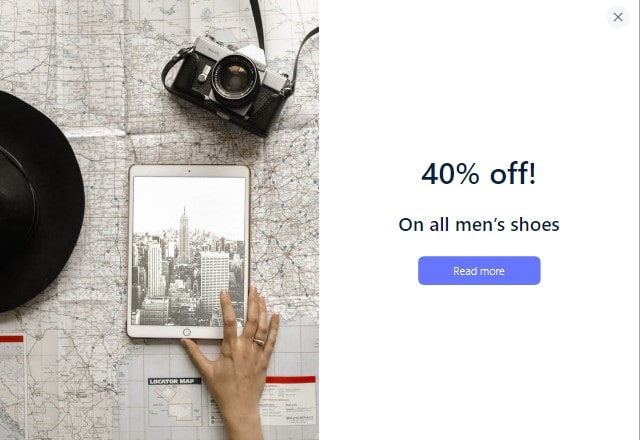
Including pop-ups on your website will help your e-commerce company flourish since they are a great technique to raise client interaction and conversion rate. Pop-ups applied strategically can turn your e-commerce website into a convertible powerhouse.
Pop-ups can be used for anything from email capture to discount announcements to customer finalizing of transactions. With an appealing offer, they can quickly disrupt a customer’s navigation and send them straight into making a purchase or supplying useful contact information.
Let us take an e-commerce store focused on natural skincare products under consideration. A pop-up providing a 15% discount on first-time orders could draw guests and motivate them to become paying customers.
Make sure your pop-ups adhere to best standards:
- Keep the message appealing and brief.
- Put in place an easily found exit button.
- Design with visual attractiveness.
- At last, call for clear action.
A pop-up warning, “Enjoy a Healthy Glow! Get 15% off your first order; hurry and offer ends soon! uses urgency, simple language, and a compelling offer to lead the guest toward a purchase.
One of the best ways to increase your conversion rate on your website is adding pop-ups. This is a chance to send strong, focused messages to your clients that will inspire quick action. Thus, you can greatly improve your e-commerce performance by using the possibilities of pop-ups.
14. Offer Free Shipping
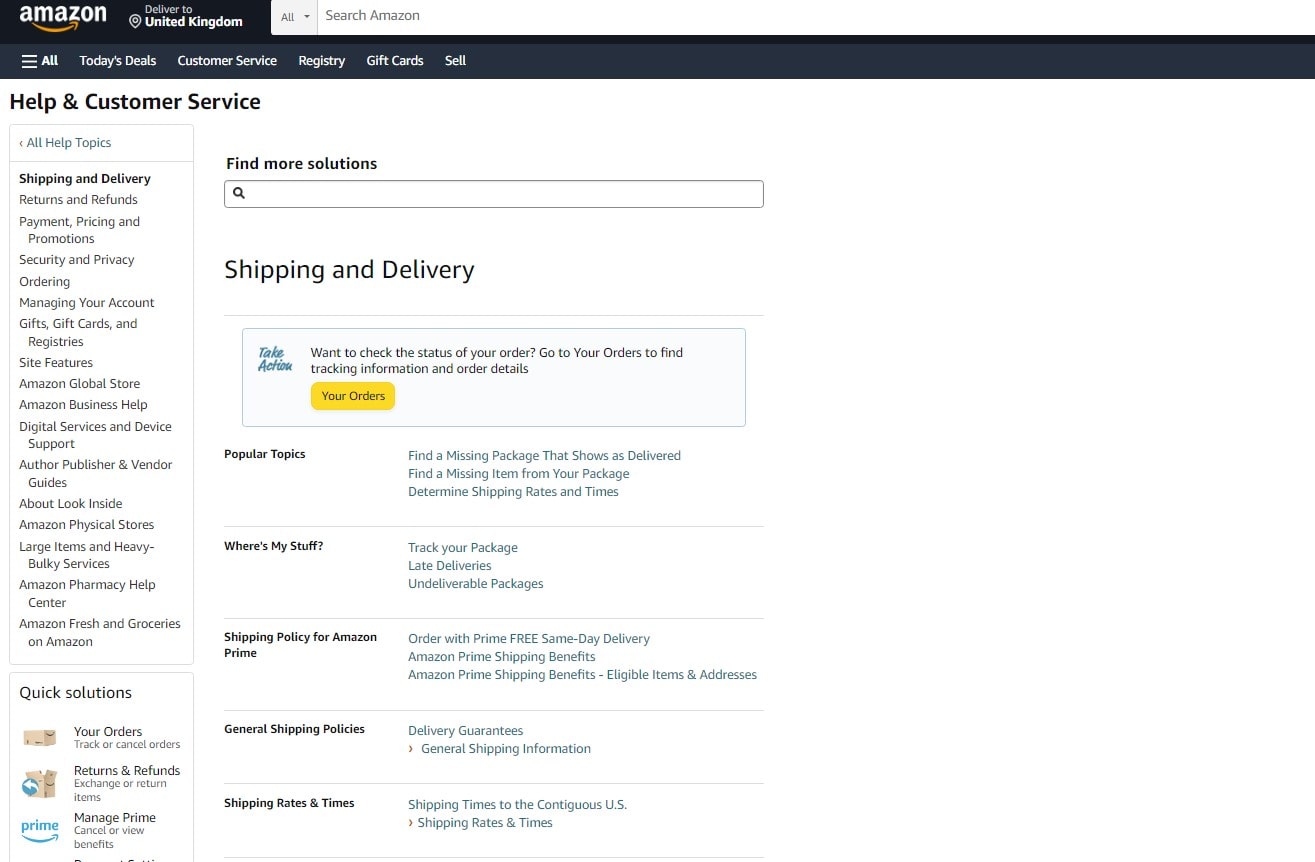
Offering free shipping will help you maximize your e-commerce success; this is a strong argument for raising customer satisfaction and converting rate. Many customers base their decisions mostly on free shipping, which frequently converts window shoppers into purchasing ones.
Imagine an online clothes retailer. Including a “Free Shipping” sticker on every item might boost user interaction and purchases.
Remember the following even as you are providing free shipping:
- First, obviously state free delivery on your homepage.
- Stress it mostly on checkout and product pages.
- Use it at last as a marketing tool in email campaigns.
Imagine a pop-up announcing, “Delights You More – Now Enjoy Free Shipping on All Orders!” This message makes one excited and leaves a good impression, which could inspire a quick buy choice.
Offering free shipping removes a major obstacle from the purchasing process. For instance, shipping expenses may result in abandoned goods; by removing this barrier, you are opening the path for a more pleasing purchasing experience. Including free delivery into your e-commerce plan can also be a very effective approach to increase your conversion rate and conversion browsing customers into devoted shoppers. In the end, it’s a win-win situation: a growing e-commerce company and a delighted customer.
15. Use Abandoned Cart Emails
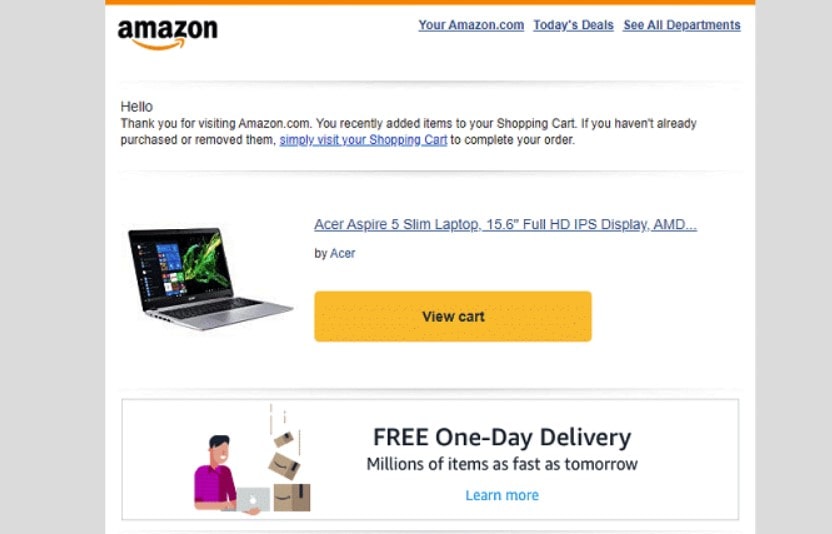
Use abandoned cart emails to raise your e-commerce conversion rate. This strategy helps you to re-connect with customers who placed things to their cart but still need to finish the purchase.
Imagine a web-based tech gadget retailer. Adding a wireless headphone to the cart, a buyer gets sidetracked and leaves the site. A reminder sent via an automated abandoned cart email entices the buyer back to complete their transaction.
Emails on abandoned carts should:
- Add a nice and clear subject line.
- Present the discontinued goods.
- Provide links of customer service or help.
- Add a robust call to action.
An email subject line that says, “Complete Your Purchase – Your Dream Headphone Awaits!” along with a photograph of the product and a “Complete Purchase” button, for example, invites the recipient to return and check out.
Emailing abandoned carts will greatly raise your conversion rate. It’s like lending a helping hand to customers just about ready for a purchase. It nudges gently to encourage patrons to come back across the finish line. In the end, abandoned cart emails can close the browsing-buying gap and propel your e-commerce company toward steady expansion and client happiness.
16. Run A/B Testing Regularly

Frequent A/B testing will improve your e-commerce success. This data-driven method lets you test many facets of your website, therefore improving the customer experience and raising your conversion rate.
Consider yourself running an online workout equipment store. You should find out whether increasing sales depends more on your “Buy Now” or “Add to Cart” button. A/B testing offers the solution by allowing you to evaluate outcomes and apply the winning choice.
Think about these ideas while running A/B tests:
- Test one variable at a time first for exact findings.
- Choose important components such calls to action, product descriptions, or headlines.
- Third, for dependability, have a large sample size.
- Let the test run till you reach statistical relevance at last.
Within the framework of our fitness equipment store, you might set up a test whereby half of your traffic views the “Buy Now” button and the other half views the “Add to Cart.” Examining the outcomes can help you identify the call-to- action that increases conversions most.
Frequent A/B testing helps you to clearly show your road towards a perfect e-commerce platform. This methodical approach helps you to get understanding of customer behavior and preferences, so enabling you to make wise selections raising conversion rates. A/B testing helps you to maximize your e-commerce business by precisely matching your website to customer needs and allowing you to adjust it.
17. Include a FAQ Section
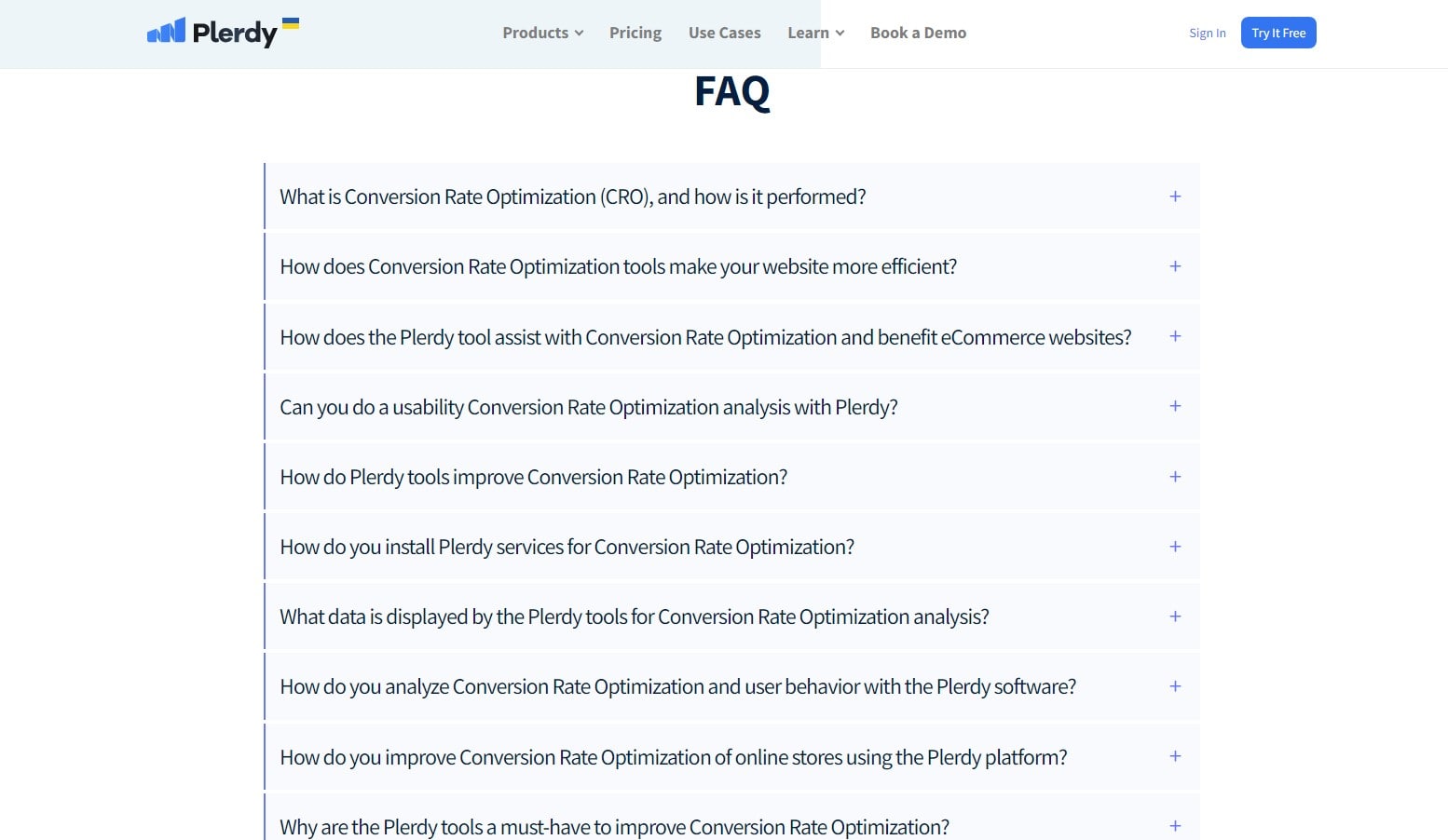
Incorporating a Frequently Asked Questions (FAQ) section will help your e-commerce company. Effective FAQs help to build client confidence and save time, so improving your conversion rate.
Consider running an online bookshop. Including a FAQ section covering frequent inquiries like shipping schedules, return policies, or book conditions can help to greatly streamline the customer path and ease buying.
Important features of a good FAQ section include in:
- Covering typical customer questions and concerns.
- Keeping a straightforward navigation system.
- Frequent section updates help the material remain current.
- Maintaining succinct yet thorough responses.
For a standard question like, “What’s your return policy?” the online bookshop might respond, “We offer a hassle-free, 30-day return policy for books in their original condition.”
A pillar of customer care, the FAQ area provides quick responses and fosters confidence. It allays customer uncertainty so that the change from browsing to buying goes without incident. Simple, unambiguous responses to often asked questions help to lower customer uncertainty and drive them toward conversion.
Any e-commerce company trying to improve the customer experience and raise the conversion rate would be wise in including a FAQ area. A well-written FAQ section helps you to establish your company as dependable and client-centric, hence boosting customer happiness and better sales performance.
18. Implement a Wishlist Feature
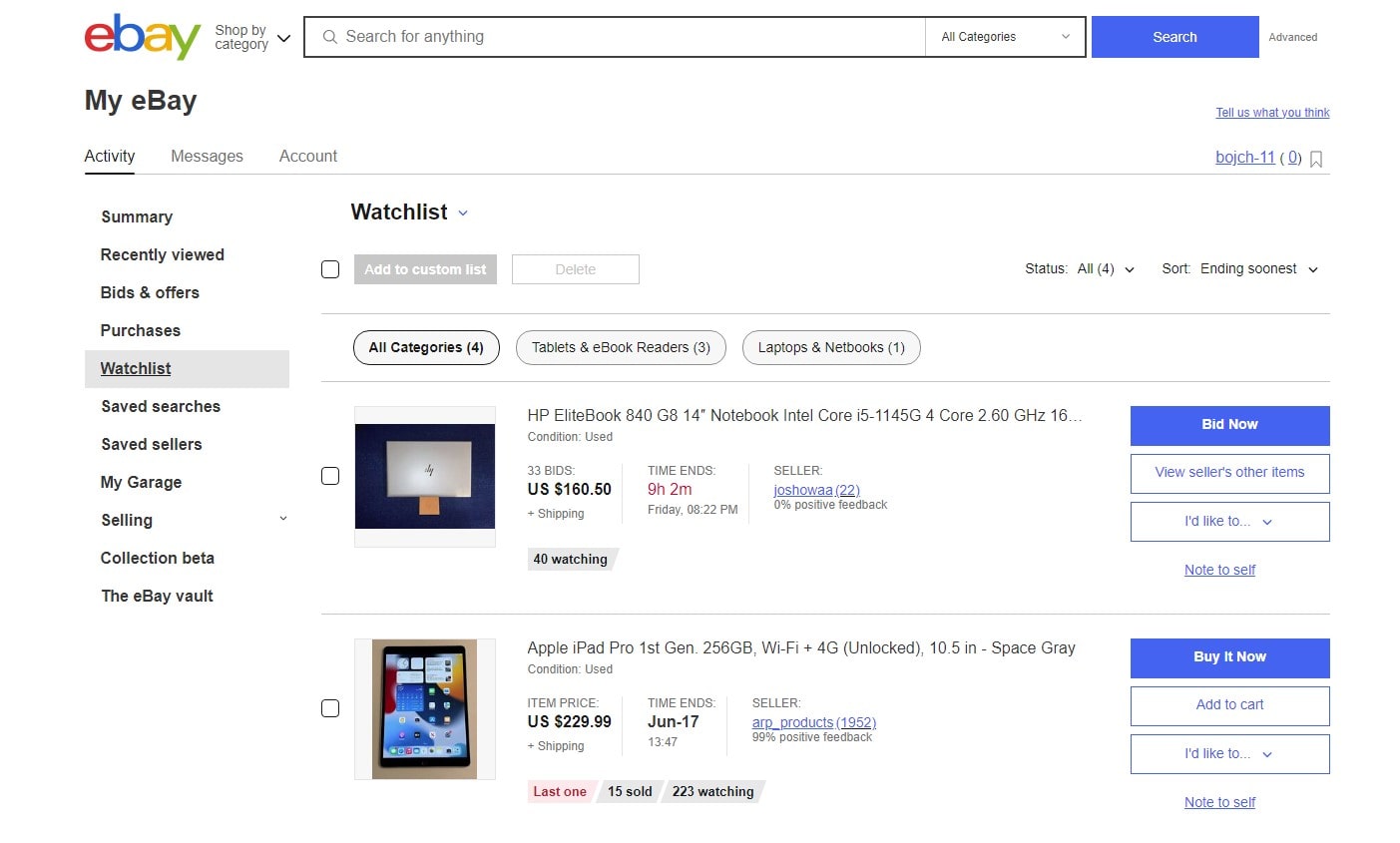
Using a Wishlist tool will help your e-commerce company greatly raise its conversion rate. This function lets customers save products they might be interested in for next purchases, therefore supporting sales and often igniting desire.
Consider a chic internet clothes store, for instance. Customers can mark an eye-catching garment or a sought-after pair of boots for later purchase on a wishlist, therefore keeping the item in their minds and your store front and front in front of them.
A wishlist’s main advantages are:
- Encouraging return trips to your online store.
- Encouragement of simple product link sharing among friends and relatives.
- Compiling customer preferences to support tailored marketing.
Consider a customer who has included a designer outfit on her wish list. She might tell her friends, therefore raising the profile of your website and maybe drawing in fresh business. You also learn a great deal about her preferences, which will enable you to match ads and offers to her taste.
One direct path to the needs of the client is the wishlist function. It enhances customer involvement and raises the possibility of conversion, therefore supporting a more tailored purchasing experience. Using a wish list will help you to increase client happiness and finally improve your e-commerce conversion rate. The wish list is a strategic tool meant to boost sales and client retention, not only a perk.
19. Encourage User-Generated Content
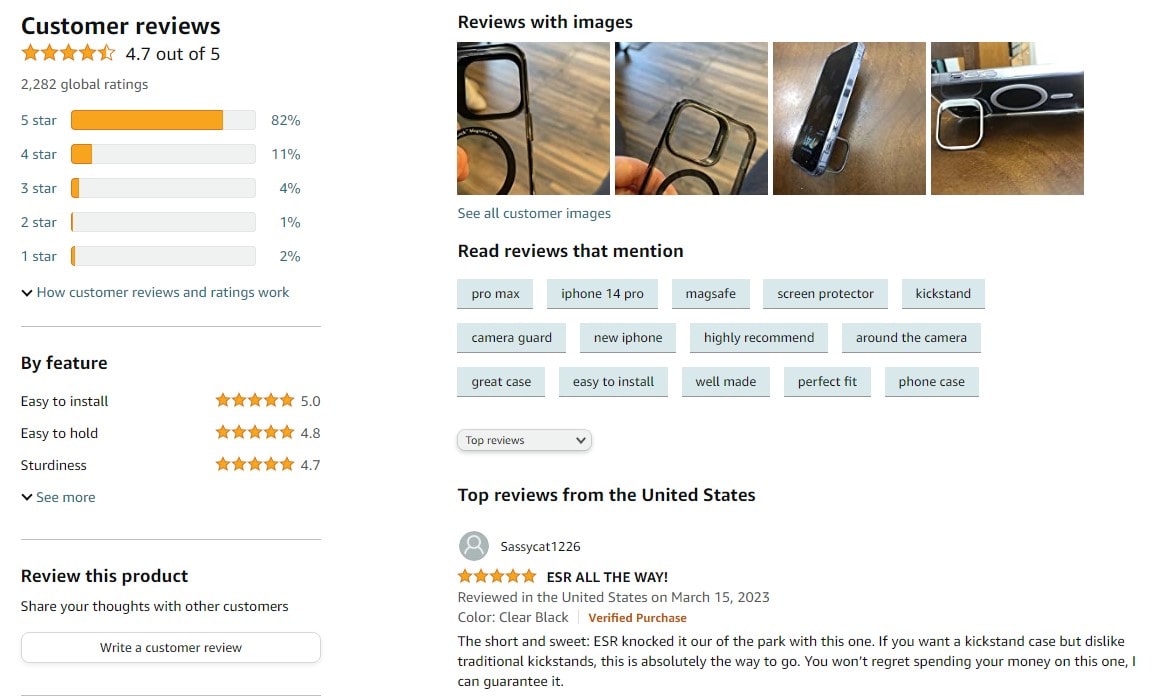
Using user-generated content (UGC) is a great way to raise the conversion rate in your online retailer. It improves customer involvement, strengthens the community surrounding your business, and creates trust.
Let’s take a look at a contemporary furniture e-commerce site that invites customers to post pictures of their recently renovated homes utilizing their products. This store might design a hashtag for customers to turn their Instagram feed into a dynamic display of actual homes with their furniture.
UGC has several different advantages.
- Authenticity: Real customers of your goods will help your brand to be more credible.
- Engagement: UGC promotes brand loyalty and community spirit by means of interaction.
- Free Marketing: Customers that engage in free marketing start brand champions that spread your goods to their friends.
Imagine Jane, your client, uploading a picture of her lovely living room including your elegant coffee table. Her friends respect her elegant décor; the next time they need furnishings, they are more inclined to visit your online store.
Promoting UGC helps you to build a distinctive, consumer-oriented buying experience. Your clients thus feel appreciated, seen, and as part of a larger community. Customer retention and greatly raised conversion rates can be driven by this involvement and sense of belonging. User-generated content is basically a great tool for every e-commerce company trying to boost its customer satisfaction, conversion rate, and reach.
20. Offer Multiple Payment Options
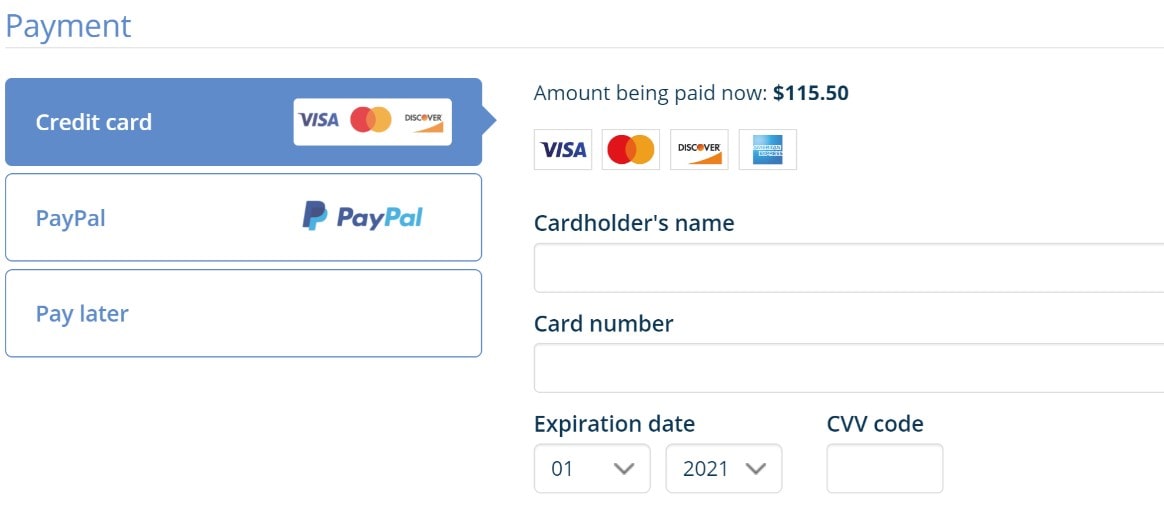
Expanding your payment alternatives can help you to increase the conversion rate and customer happiness of your online store. Choosing several payment methods is no more a luxury; it is a need. Customers want simplicity and flexibility, hence providing several payment options meets their needs.
Imagine an online merchant of workout equipment serving customers all around. From credit and debit cards to digital wallets, bank transfers, and pay-on-delivery, they use a wide spectrum of payment alternatives given customers in many nations and areas.
There are benefits to have several payment methods:
- Accessibility: Guarantees customers’ easy ability to make purchases regardless of their preferred payment method.
- Trust: Customers start to trust your brand when they see typical payment methods.
- Conversion: Reduces abandoned carts to raise conversion rates.
Imagine Alex, a customer who likes online buying using his digital wallet. He finds his preferred payment option available when he adds a new treadmill to his cart. Because the shopping experience meets his expectations, he is more likely to finish the purchase and maybe start returning visits.
Serving many payment choices helps you to attract a larger clientele and increase your conversion rate. Your e-commerce company is ready to meet different customer preferences by providing several payment choices, therefore enhancing simplicity, confidence, and finally your conversion rate. It’s about designing a buying experience that emphasizes customers, therefore benefiting both your company and them.
21. Incorporate an Easy Return Policy
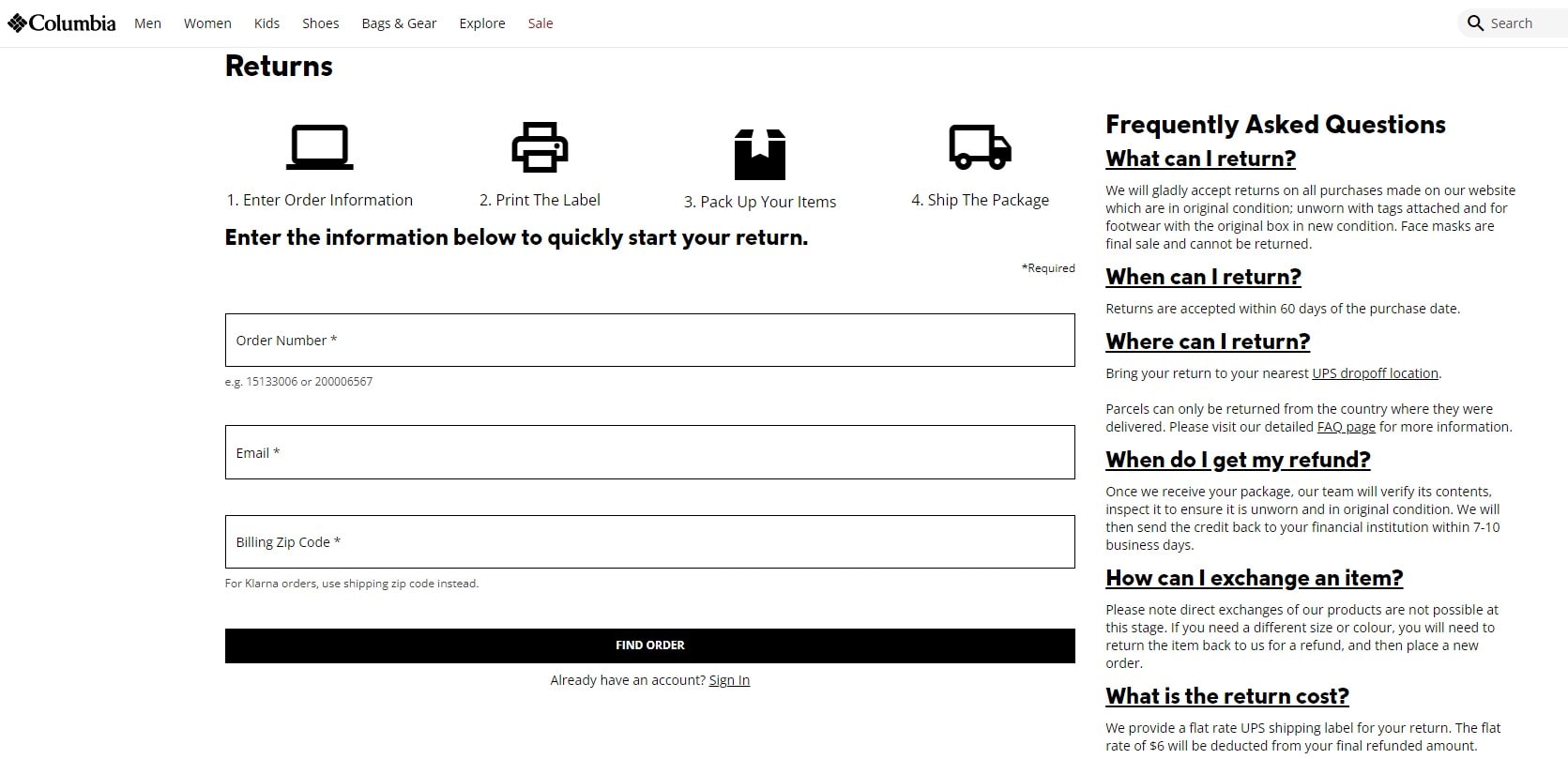
A simple return policy will increase customer satisfaction and improve the conversion rate of your online store. Customer experience depends critically on a simple, hassle-free return policy; it fosters confidence and strengthens loyalty.
Imagine a small-town clothes shop with a basic 30-day return policy including pre-paid return postage. This small deed greatly enhances the buying experience and generates a lot of good feedback and returning business.
An easy return policy benefits from the following:
- Encourages: Motivational tool for first-time buyers to buy with assurance.
- Loyalty: One-time customers can become devoted customers with prompt, simple returns.
- Conversion: Conversion helps to reduce customer uncertainty, so increasing the conversion rate.
Imagine now a customer named Rachel ordering a dress online. The retailer’s simple return policy provides her confidence to finish the purchase even though she is still deciding the size. She can just back off the dress at no additional expense when it arrives and doesn’t fit. Her good experience motivates her to keep buying from the retailer.
Adopting an easy return policy is about putting your customer at the center of your business plan – giving them a simple, risk-free purchasing experience that will eventually raise your e-commerce conversion rate.
Bottom Line
It is not magic to turn your e-commerce effort into a conversion machine. It requires a strong awareness of what works and what doesn’t together with the pragmatic use of tried-out ideas. From developing engaging product descriptions to using clever upselling, we have looked at 20+ effective techniques to increase your conversion rates.
Using strong tools like Plerdy’s UX & CRO analysis dashboard is a main highlight of this transformation process. It follows and maximizes your user path, giving vital information to improve client experiences and increase conversions.
Recall—conversions are more than just a numbers game. They represent the success of your online sales as well as your capacity to draw in, interact with, and turn website visitors into devoted customers.
Your conversion rate is always changing; it’s a second-by–second issue. But you’re well on your way to create an e-commerce experience that sells and shines using these tried-through techniques and modern technologies like Plerdy.
Ready for a test run? Register for Plerdy now to start your road towards conversion optimisation. Take charge of your e-commerce performance; while you are driving, you determine the speed. It’s time to increase those conversion rates; more conversions are simply a Plerdy tool away.
